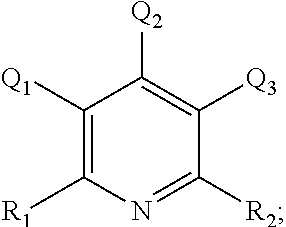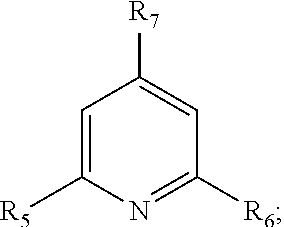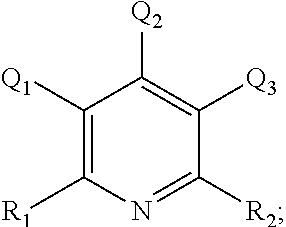Treatment fluids comprising a silicate complexing agent and methods for use thereof
a technology of complexing agent and treatment fluid, which is applied in the field of matrix acidizing of subterranean formations, can solve the problems of inability to reduce the ph much below about 1, and the inability to achieve the effect of reducing the production of insoluble fluorosilicates
- Summary
- Abstract
- Description
- Claims
- Application Information
AI Technical Summary
Benefits of technology
Problems solved by technology
Method used
Image
Examples
example 1
Effect of 2,6-Diaminopyridine on Fluorosilicate Precipitation
[0064]Control: 25 mL of 1 M aqueous H2SiF6 solution was combined with 10 mL of water and 20 mL of 2 M aqueous NaCl solution. After addition of the NaCl solution, the combined mixture turned slightly cloudy. Thereafter, a further 20 mL of 1 M H2SiF6 solution was added. The combined mixture then became very cloudy, and a precipitate settled over time. Trial 1: 4 mL of 2 M aqueous NaCl solution was combined with 18 mL of 1 M aqueous 2,6-diaminopyridine solution. To this solution was added 9 mL of 1 M aqueous H2SiF6 solution. No precipitate formed over two hours of observation. Trial 2: 9 mL of 1 M aqueous H2SiF6 solution was combined with 18 mL of 1 M aqueous 2,6-diaminopyridine solution. To this solution was added 4 mL of 2 M aqueous NaCl solution. Again, no precipitate formed over two hours of observation.
[0065]The foregoing tests indicate that precipitation occurred rapidly in the absence of a silicate complexing agent. Ho...
PUM
| Property | Measurement | Unit |
|---|---|---|
| formation temperatures | aaaaa | aaaaa |
| pKa | aaaaa | aaaaa |
| pKa | aaaaa | aaaaa |
Abstract
Description
Claims
Application Information
 Login to View More
Login to View More - R&D
- Intellectual Property
- Life Sciences
- Materials
- Tech Scout
- Unparalleled Data Quality
- Higher Quality Content
- 60% Fewer Hallucinations
Browse by: Latest US Patents, China's latest patents, Technical Efficacy Thesaurus, Application Domain, Technology Topic, Popular Technical Reports.
© 2025 PatSnap. All rights reserved.Legal|Privacy policy|Modern Slavery Act Transparency Statement|Sitemap|About US| Contact US: help@patsnap.com



